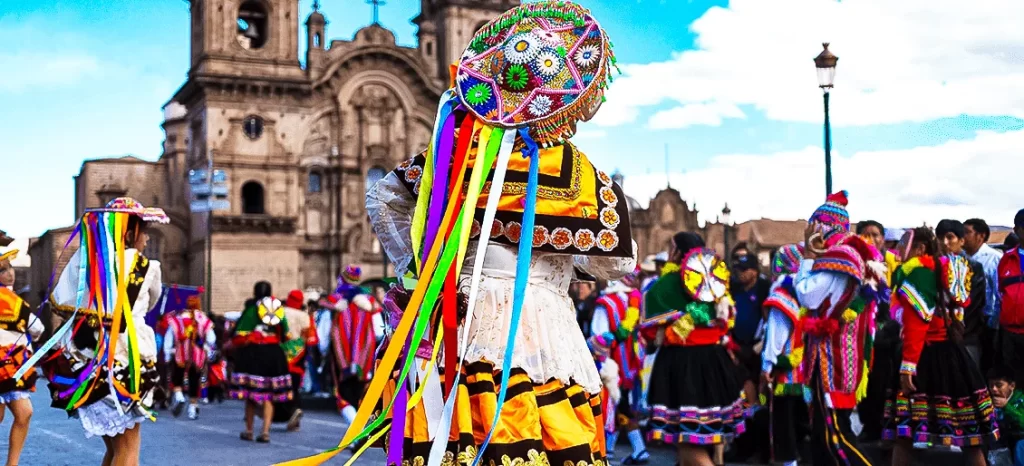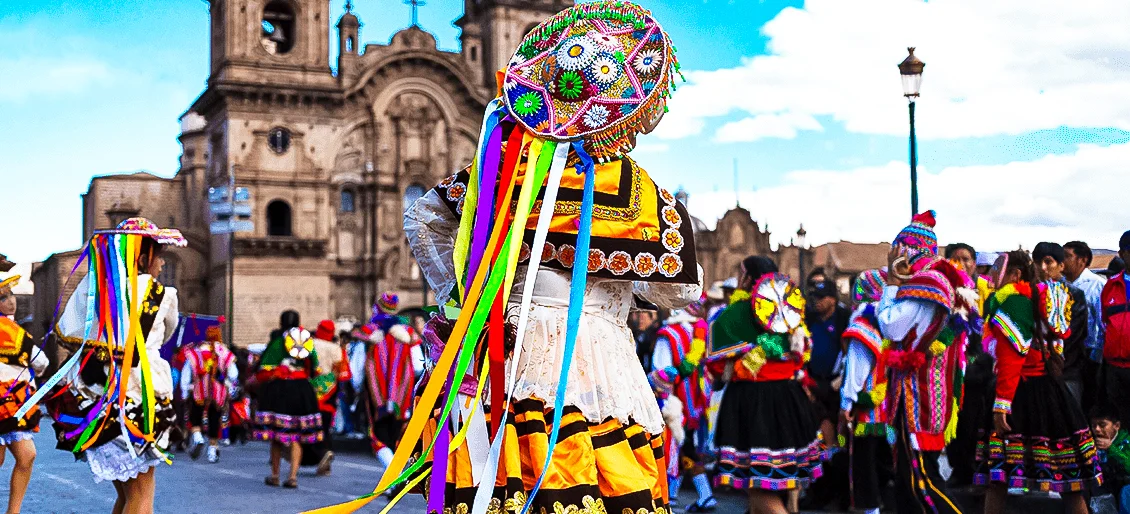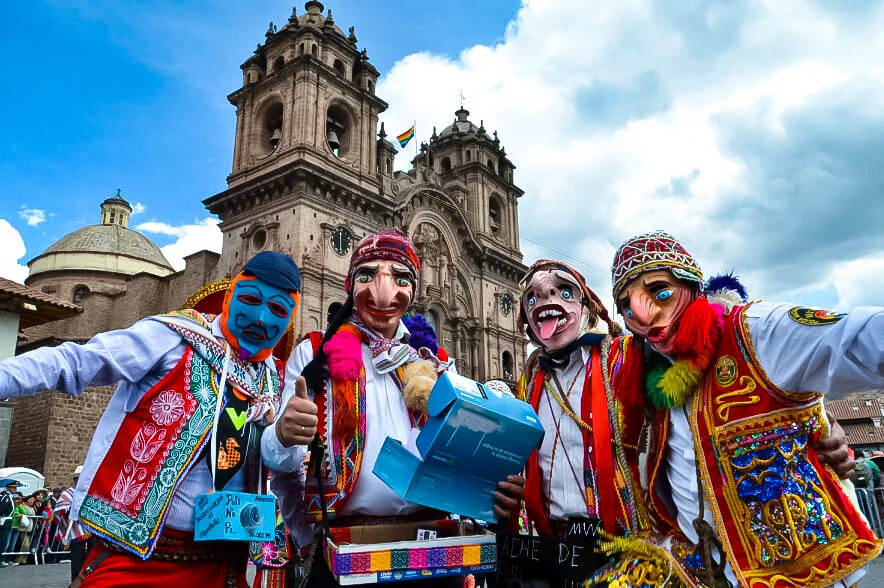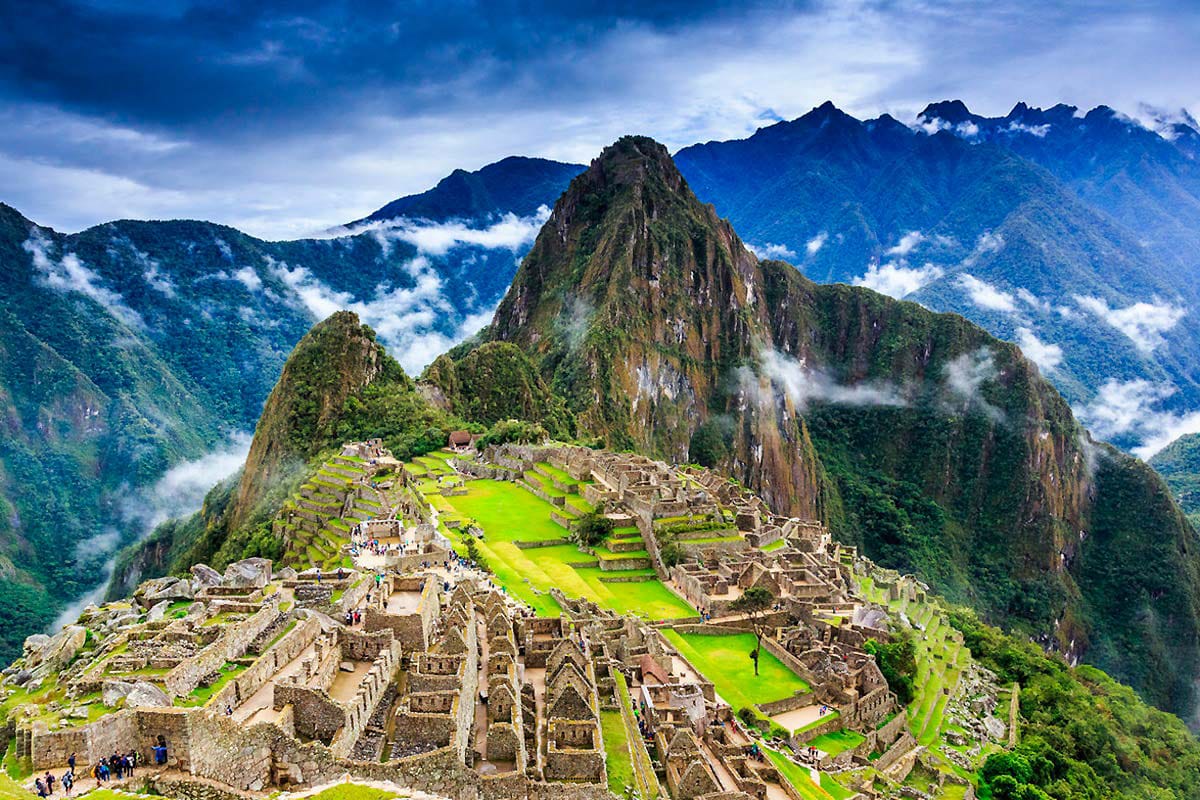Celebrated in February, this festival showcases our homeland as a hub of joyful customs. It stands out by emphasizing its unique characteristics, distinguishing itself from the dominating influence of the carnivals introduced by the early Christians to America. Serving as an intersection of traditions, this festival serves as a testament to the rich cultural diversity found in Peru.
Origin
The beginning of carnival celebrations seems to date back to pagan festivities dedicated to Bacchus, the Roman god of wine. Its possible connection with the festivities in honor of the Apis bull in ancient Egypt is also mentioned.
According to historians, these festivities, more than 5,000 years old, spread throughout the Roman Empire and became an established tradition in Europe, being introduced in America by the Spanish and Portuguese at the end of the 15th century. In the case of Peru, the carnival arrived through the first Christians. However, due to cultural interaction and religious syncretism, the carnival acquired distinctive characteristics, later adapting to the particularities of each region.

At the beginning, when these celebrations were just beginning to be held in Peru, these festivities stood out for their popularity and great savagery, so it was decided, at first, to repress it. In the XIV century, those who visited this land reported that our festivities were carried out with great savagery and extreme joy.
What used to be done during that time was to throw water from the balconies or to throw eggs filled with water or perfume depending on the class to which they belonged. You can also read in the chronicles that between 1860 and 1875 approximately, scenes of injuries and even deaths were often seen during the three days of the celebration.
Characteristics and Beliefs
Initially, carnivals were noted for their satirical nature. During these festivities, the representations were directed in a burlesque and grotesque manner towards the authorities of the population, using masks as a form of disrespect towards the main religious figures.
In that period, it was common for police officers to be the object of contemptuous actions by the population. A slight but revealing example of the lack of respect for these authorities was the use of water jets.
In Peru, the carnival is distinguished by its joy, vibrant colors, parades and other elements that make it one of the most significant festivities in the country.
This celebration is intriguing, as each region and even each department has its own unique customs and beliefs regarding the celebration of carnival. In the context of the Andean cosmovision, the carnival festivity is attributed to Ño Carnavalón.
Even though the attribution may be somewhat symbolic, this character plays a central role in the carnivals. Ño Carnavalón symbolizes the Aymara ancestors who come back to life through the ceremonial unearthing of the Ño.
At the conclusion of each carnival, Ño Carnavalón is laid to rest along with beer, quinces, challas, and streamers, only to be exhumed the following year at the onset of the carnival. His burial signifies the burying of the past, and the vibrant colors represent a symbolic rebirth.
Carnivals are synonymous with exuberant joy, and across the towns of Peru, there is a spirited competition to host the most lively and colorful celebration. Consequently, February becomes one of the eagerly anticipated months of the year for both locals and tourists, as they join in the festivities marked by dances, parades, and music.
Cultural heritages
In our country, carnivals do not go unnoticed. The festivities are so intense, colorful and majestic that it has actually been decided to establish 5 carnival expressions as cultural patrimony of the nation.
- The Ayacucho carnival, proclaimed cultural patrimony of the nation on 4/12/2003.
- The carnival of Santiago de Pupuja, proclaimed cultural heritage on 10/09/2010.
- The Carnival of San Pablo in the Cusco region, proclaimed on September 27, 2010.
- The Carnival of Abancay, proclaimed on March 7, 2011.
- The Carnival of Abancay, proclaimed on March 7, 2011.
Particularities
Cajamarca: Capital of the Peruvian Carnival. Multicolored spectacles. If we decide to travel to Cajamarca to enjoy the Carnival we will be able to live diverse experiences from the demolition of a tree dressed with axes to be able to take the gifts, what we call yunza. Or find as well as groups called patrols, which roam the streets dancing dressed in multicolored costumes and masks; highlighting the character of the viceroy who is in charge of leading the patrol.
Junín: There are two that stand out: Carnaval Jaujino and Carnaval Marqueño. The Jaujino carnival is constituted by the traída and the yunza. The Marqueño Carnival is very popular in the Cajamarca Valley, especially in Marco where it is a very festive atmosphere.
Lima: Every Sunday in February, balloons and buckets filled with water used to be thrown, although some use talcum powder, shoe polish and pica pica to bathe the most absent-minded and thus highlight this tradition. Nowadays, there are more and more restrictions on the use of water, personal limits, etc. However, by 1940, 1950, the spirit was different because it also highlighted the beauty contests held in the districts or meetings, celebrations to enjoy these days.
Arequipa: Characterized by the song/dance Carnaval de Arequipa. The dance is a ritual that symbolizes the struggle to overcome the love resistance of the opposite sex.
Conclusions
Carnivals in Peru are very peculiar, the mixture of the natural with that which is supernatural, of the sacred with the profane. Carnivals in Peru have the weight of our ancestors.
We are not only celebrating a feast but also during it we are honoring the earth, the animals, the plants. For us or our ancestors these elements had a divine character. The feast of carnivals is for us a festive meeting with those who were before us and also with ourselves.





good information